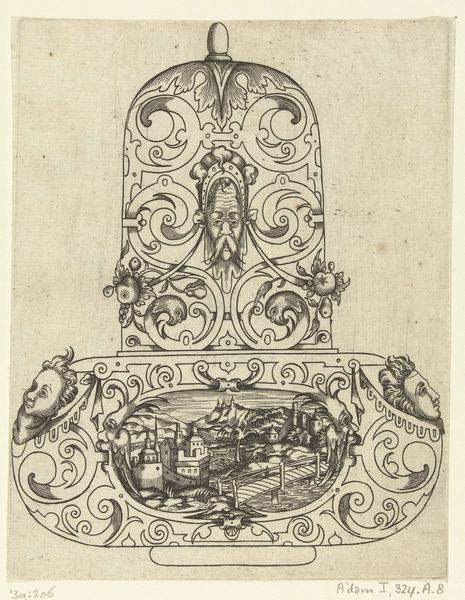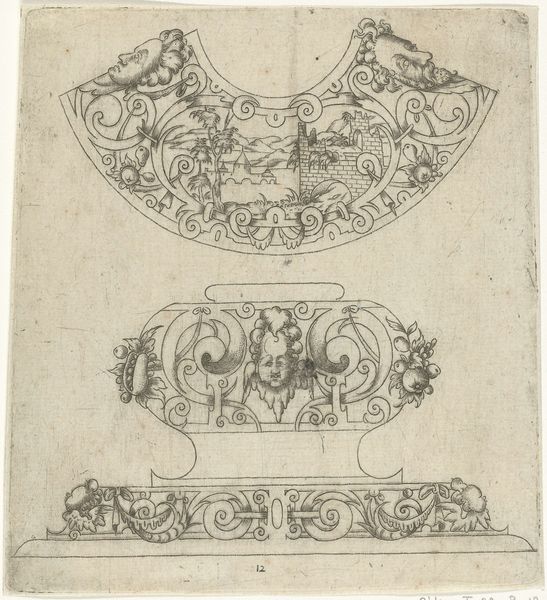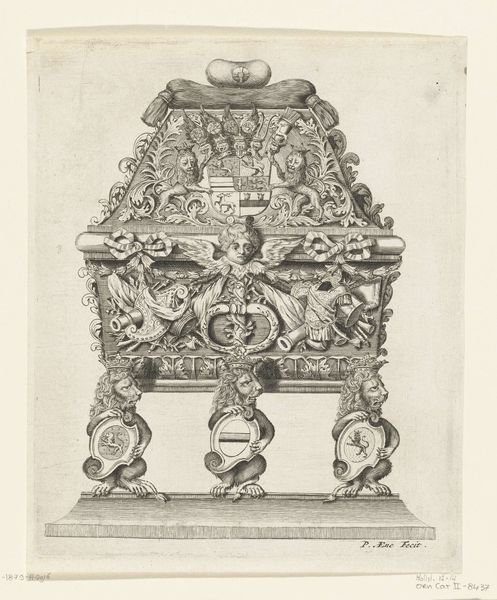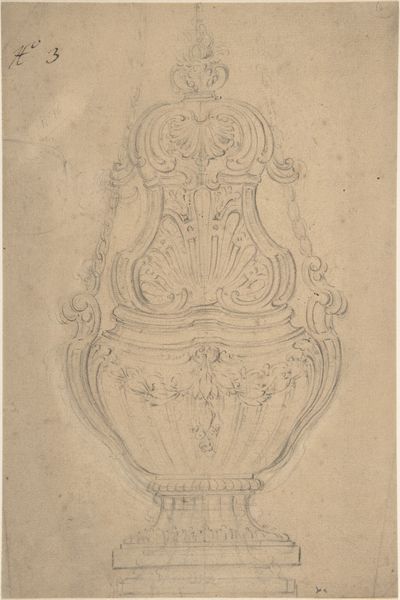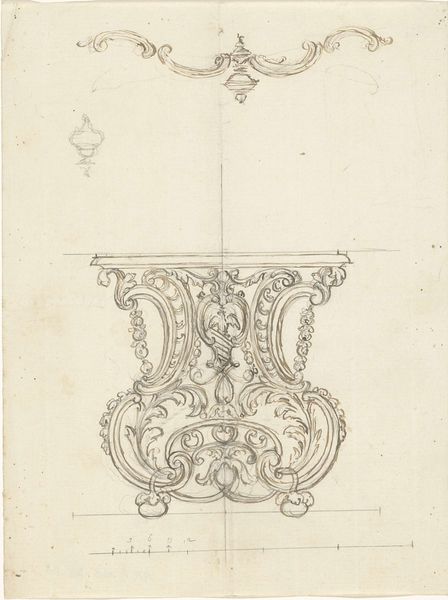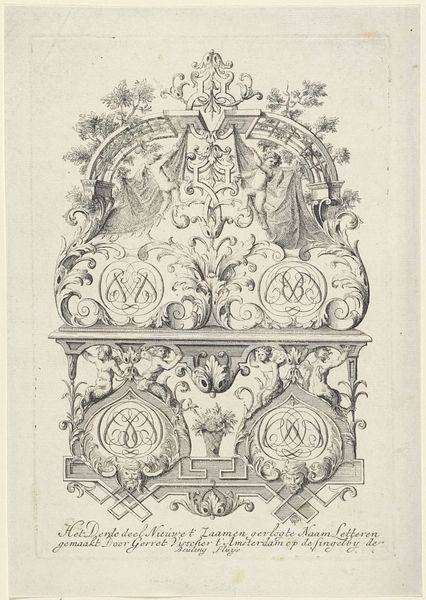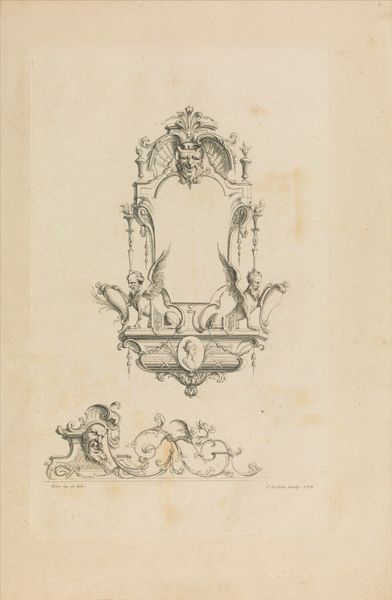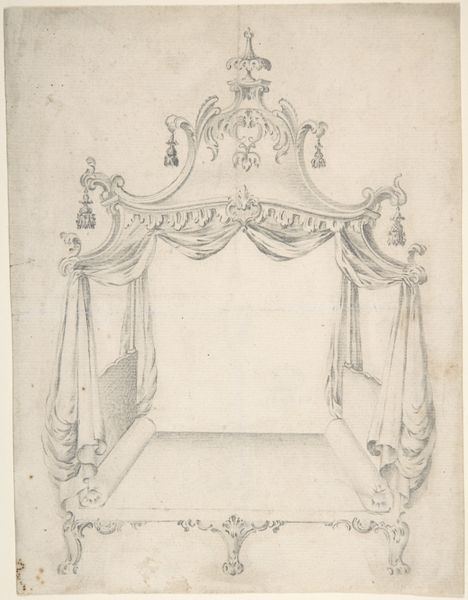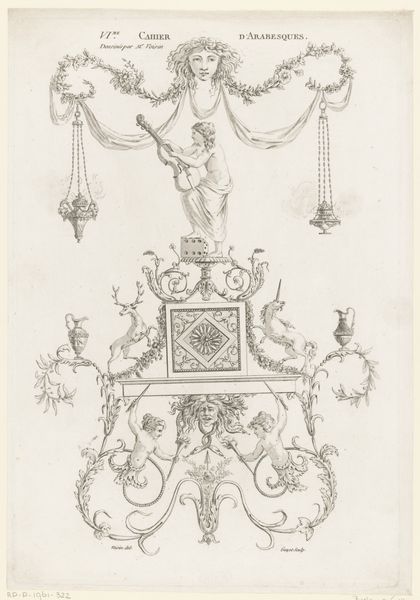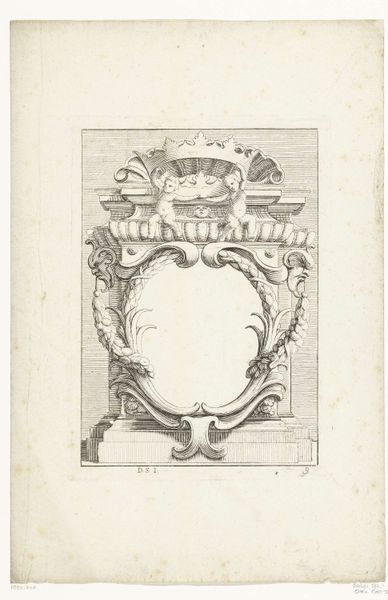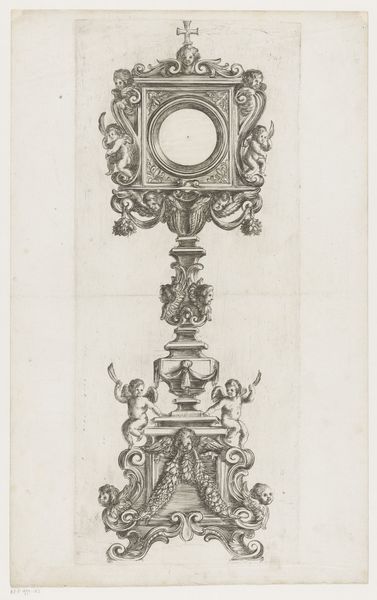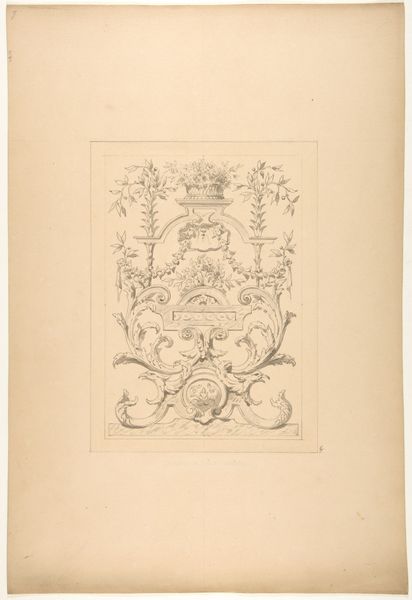
Bovenste gedeelte van een bokaal, bestaande uit een cuppa en een hoog deksel 1593
0:00
0:00
print, metal, engraving
# print
#
metal
#
old engraving style
#
form
#
11_renaissance
#
geometric
#
line
#
cityscape
#
northern-renaissance
#
decorative-art
#
engraving
Dimensions: height 172 mm, width 140 mm
Copyright: Rijks Museum: Open Domain
Editor: Here we have a 1593 engraving by Paul Flindt entitled "Upper Part of a Goblet, consisting of a cup and a high lid". It seems to be a design for metalwork. The symmetry is striking, and the level of detail feels incredibly ornate. What stands out to you in this piece? Curator: Well, let's consider the context of its creation. This engraving exists during a period of immense social and political upheaval. The rising merchant class sought to display its wealth and power, and decorative objects like this goblet were potent symbols of status. Do you notice the city depicted in the cartouche? Editor: Yes, it's almost hidden within all the flourishes. Curator: Exactly! And that cityscape is not just decoration; it's a claim. Goblets such as these were status symbols for powerful merchant cities. The form's a fusion of display and cultural identity. Flindt, through printmaking, democratized access to these symbols by disseminating templates and empowering a growing goldsmith trade. Who could afford a finished piece and whose labor was reflected in the production? Editor: That makes me consider who the artwork includes and who it excludes. Is there also a connection to be drawn between the geometric nature of the print with early scientific and mathematic discoveries being made at the time? Curator: Absolutely! The precise lines and symmetry speak to the emerging scientific worldview that influenced artistic expression. This interdisciplinary understanding provides a window into both art and science that further demonstrates social values of 16th Century Europe. It truly shows the intersectional identities of the elite during that time. Editor: I never considered that before; now I see how art, design, and societal power structures all combine to create a narrative around an object. Curator: Precisely! By examining historical objects, we unveil larger conversations about identity, wealth, and cultural production and reproduction.
Comments
No comments
Be the first to comment and join the conversation on the ultimate creative platform.
